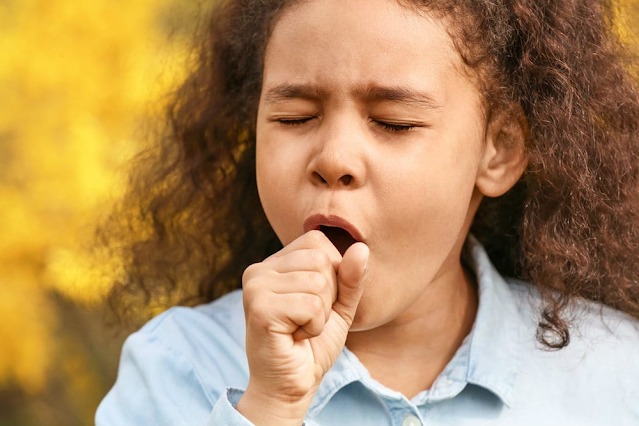If you're hearing that hacking cough and wondering if it's Whooping Cough, this article is for you
Whooping cough, also known as pertussis, might sound like a quaint childhood illness, but it's a highly contagious respiratory disease that can be serious, especially for young babies. If you're hearing that hacking cough and wondering if it's whooping cough, this article is for you. We'll delve into the causes, symptoms, and treatments of pertussis so you can have peace of mind.
Understanding the Early Signs of Whooping Cough in Its Tracks
In the early stages, whooping cough can be a master of disguise, mimicking a common cold. Here are three key symptoms to watch for that might indicate pertussis instead of a simple sniffle:
- Runny or stuffy nose: This is a common ailment, but with whooping cough, the congestion might linger for weeks, unlike a typical cold that clears up within a week or two.
- Low-grade fever: A slight elevation in body temperature can accompany the early stages of whooping cough. However, it's important to note that not everyone with whooping cough will experience a fever.
- Mild cough: The cough might start out as an occasional tickle in the throat, but unlike a cold's cough that gradually improves, the pertussis cough worsens as the illness progresses.
The Culprit Behind the Cough and Unveiling the Cause of Pertussis
The tiny but mighty culprit behind whooping cough is a bacteria called Bordetella pertussis. It thrives in the upper respiratory tract and spreads through microscopic droplets released into the air when an infected person coughs or sneezes. If you breathe in these droplets, you might become infected.
Curbing the Spread and How Pertussis is Transmitted
Pertussis is highly contagious. It can spread easily through close contact with someone who is infected. This can happen in a few ways:
- Direct contact: When an infected person coughs or sneezes near you, the droplets containing the bacteria can travel through the air and land in your nose or mouth.
- Indirect contact: Sharing a contaminated object, like a tissue or utensil, with someone who has whooping cough can also transmit the bacteria.
The Three Stages of Whooping Cough
Whooping cough progresses through three distinct stages, each with its own set of symptoms:
- Catarrhal stage (1-2 weeks): This stage feels very similar to a common cold, with a runny nose, sneezing, and a mild cough. You might mistake it for a regular sniffle and not even realize you're infected.
- Paroxysmal stage (6-10 weeks): The hallmark symptom of whooping cough emerges during this stage – the intense coughing fits. These forceful coughs come in rapid succession, often ending with a high-pitched "whooping" sound as the person tries to inhale. This characteristic whoop is especially prevalent in children but may not be as noticeable in adults.
- Convalescent stage (weeks to months): The good news is that the coughing gradually subsides during this stage, and the person recovers. However, the recovery process can be slow, and a lingering cough might persist for several weeks.
Unsure if it's Whooping Cough? Here's What to Do
While a cough is a common symptom of many respiratory illnesses, the characteristic "whooping" sound during coughing fits is a telltale sign of whooping cough, especially in children. If you're concerned that you or your child might have whooping cough, it's always best to consult a doctor. Early diagnosis and treatment can make a significant difference in preventing complications and the spread of the infection.
Fighting Whooping Cough and Effective Treatment Options
Antibiotics are the primary weapon in the fight against whooping cough. Early diagnosis and treatment with antibiotics are crucial to shorten the duration of the illness, minimize complications, and prevent the spread of the bacteria to others. In severe cases, especially with infants, hospitalization might be necessary to provide supportive care and monitor breathing difficulties.
Remember, Prevention is Key: Vaccination is Your Best Defense
Whooping cough is a highly contagious disease, but there's good news! Vaccination is the most effective way to prevent whooping cough. The DTaP vaccine protects against diphtheria, tetanus, and pertussis, and is recommended for children at specific ages throughout childhood and adolescence. There's also the Tdap vaccine, which is a booster shot specifically formulated for adolescents and adults to maintain immunity against pertussis.
By staying up-to-date on vaccinations and practicing good hygiene (frequent handwashing and covering coughs and sneezes), you can significantly reduce your risk of contracting whooping cough and protect those around you, especially vulnerable newborns and infants who are too young to be fully
About the Writer
Jenny, the tech wiz behind Jenny's Online Blog, loves diving deep into the latest technology trends, uncovering hidden gems in the gaming world, and analyzing the newest movies. When she's not glued to her screen, you might find her tinkering with gadgets or obsessing over the latest sci-fi release.What do you think of this blog? Write down at the COMMENT section below.

No comments:
Post a Comment